






| Spotted Sandpiper (Actitis macularius (Linnaeus, 1766)) |







|
|
Scientific name: Actitis macularius (Linnaeus, 1766) Common name: Spotted Sandpiper French name: Chevalier grivelé, Branle queue, Hoche queue. Order: Charadriiformes Family: Scolopacidae Size: Body size: 15 to 20 cm; Wingspan: 37 to 40 cm; Weight : 34-50 g. Habitat: Sea coasts and inland river banks, whatever the habitat is, meadows, bushes or forests. Food: Insects, worms, small crustaceans and small molluscs. They need to eat a lot of food before the long distance migration. Nesting: Females are polyandrous. They can have up to five broods per year of about 4 eggs each. The different males will sit on the eggs and will take care of the chicks. The nests are on the ground in shallow depressions. They are lined with dry grasses. Migration: The Spotted Sandpiper is a long distance migratory bird. Birds from Siberia winter in Australia and birds from Canada winter in Argentina and in the neighbour regions of South America. Geographic area: North America and eastern Siberia. You can sometimes observe the Spotted Sandpiper in western Europe as a rare migrant. |
The Spotted Sandpiper is a small wader which can be distinguish by the fact it is constantly balancing its tail. This is the equivalent of the European Common Sandpiper for America. The upper side is olive greyish-brown with darker marks on the wing coverts. The underside is white and becomes spotted with dark in nuptial plumage. There is a dark eye stripe, sharper behind the eye, with a white line above. The bill is thin and straight, the legs are dull yellow. The tail is very short and extends only a very short length beyond the tip of the wings. The Spotted Sandpiper is a rather solitary bird. |
| [To know more about the Spotted Sandpiper] [Next picture] [Top] |
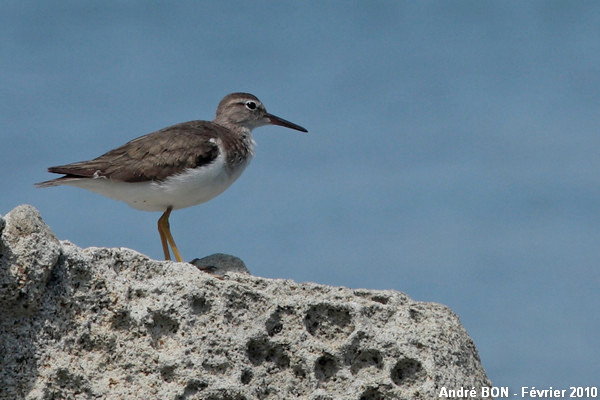
|
It seems to me that this Spotted Sandpiper has preferred to winter in the Caribbean instead of flying thousand of kilometres further south to Argentina. |
| [To know more about the Spotted Sandpiper] [Next picture] [Previous picture] [Top] |
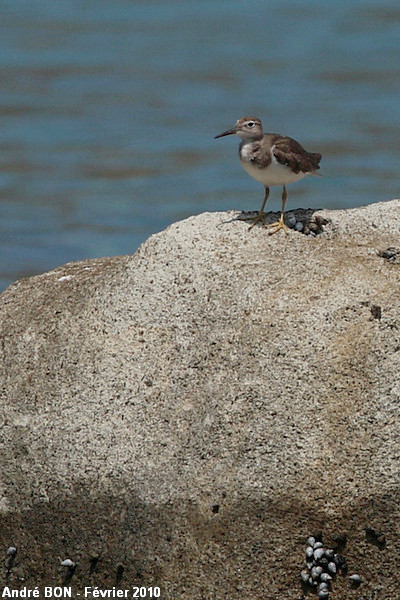
|
During my stay of about 10 days in the Guadeloupe islands, I have observed 4 or 5 Spotted Sandpipers, always alone and always near the sea shore. |
| [To know more about the Spotted Sandpiper] [Next picture] [Previous picture] [Top] |
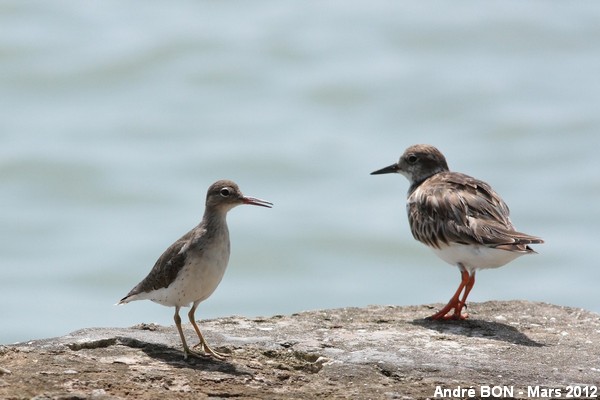
|
I have shot this picture on the Îles du Salut (Islands of Salvation in English, in fact on the Île Royale). This Spotted Sandpiper is accompanied by a Ruddy Turnstone. |
| [To know more about the Spotted Sandpiper] [Next picture] [Previous picture] [Top] |
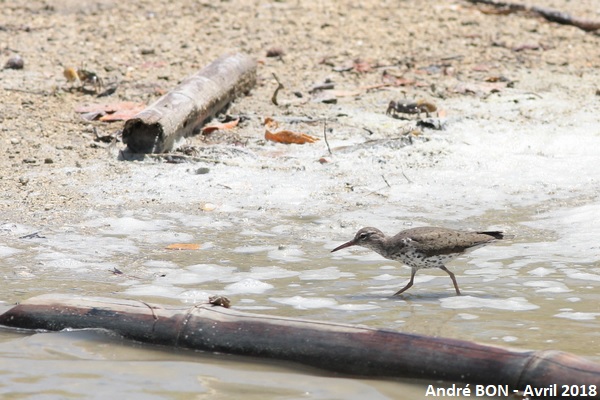
|
It is possible that this Spotted Sandpiper stopped off at the Grand-Étang des Salines on its long migration path back to its nesting area. |
| [To know more about the Spotted Sandpiper] [Next picture] [Previous picture] [Top] |
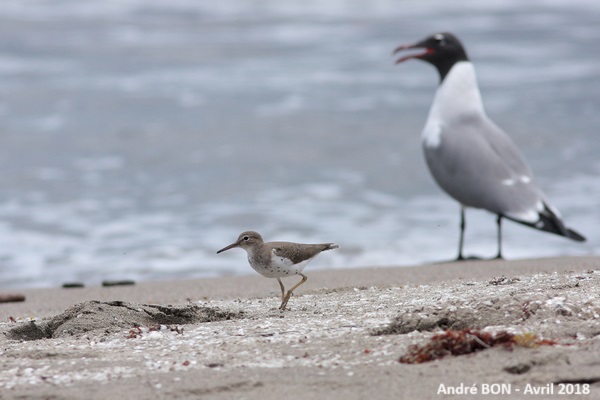
|
The Spotted Sandpiper does not play in the same weight category as the Laughing Gull! |
| [To know more about the Spotted Sandpiper] [Next picture] [Previous picture] [Top] |
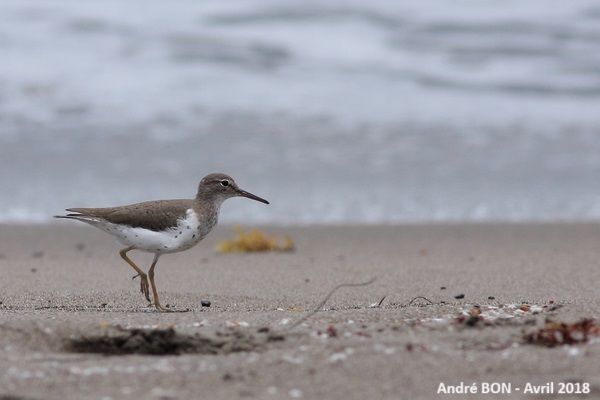
|
This Spotted Sandpiper was not very shy. I simply crouched down to take a shot at eye level. |
| [To know more about the Spotted Sandpiper] [Previous picture] [Top] |
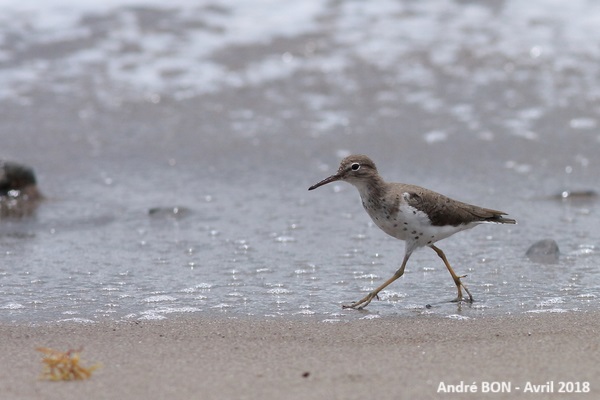
|
Same specimen as above. |